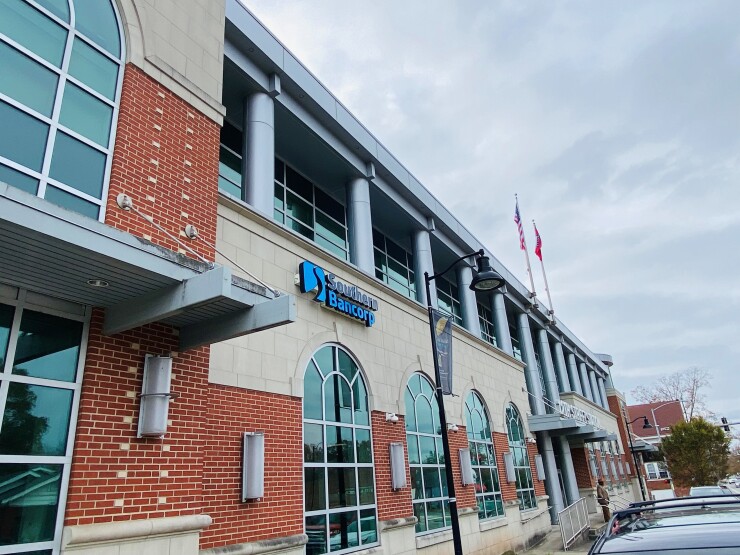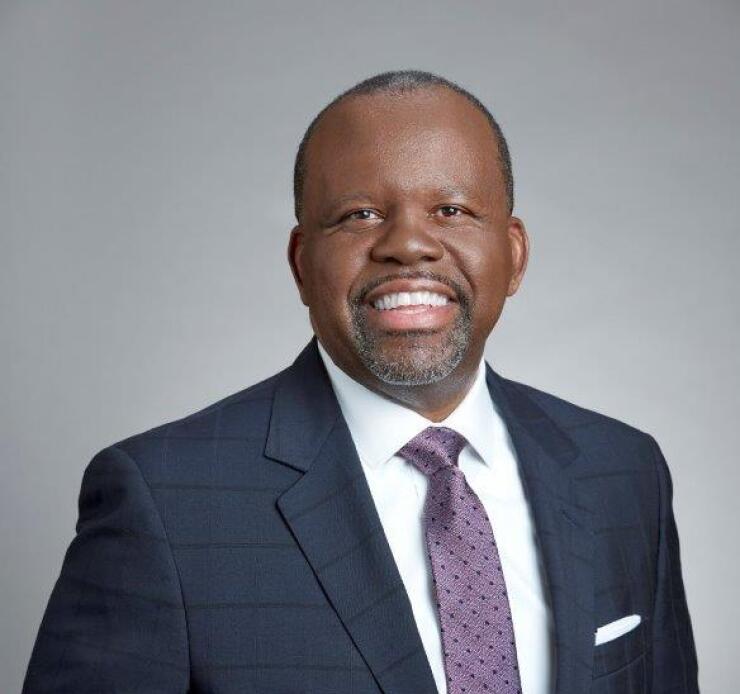
Southern Bancorp in Little Rock, Arkansas, is among the biggest beneficiaries of the $8.7 billion Emergency Capital Investment Program the Treasury Department
The process has run him a little ragged, Williams admitted in a recent interview.
"We have opportunity frustration," Williams said. "There are so many opportunities. Part of my role here is to really crystallize and focus on those that will have the deepest impact on people and this organization. … I'm staying up nights trying to figure out how to make this all work."
To be sure, an overabundance of capital isn't a bad problem for a bank to have, especially a $2.6 billion-asset community development financial institution that struggled to raise it in the past. Between 2017 and 2021, Williams conducted a campaign that raised $50 million — a fifth of what the Treasury Department invested in Southern in July 2022.
The bank's plans for deploying the ECIP cash include a major investment in home lending, boosts to consumer and Small Business Administration lending, as well as pursuit of mergers and acquisitions. The ultimate aim is to double Southern's size over five years — the idea being a bigger bank can do more to help disadvantaged communities.
"We use size as a proxy for impact," Williams said.
"I'm probably even more optimistic now than when I came on board" in 2013, Williams said. "I'm pretty excited about what we can do. … It's great when the government's program matches your strategy."
Seeking deep impact
Under ECIP, the Treasury invested more than $8.5 billion in pandemic-relief funds directly into 174 community development financial institutions and minority depository institutions. The aim was to stimulate lending to underserved consumers and small businesses. The program appears to be having the desired effect, with
"So far, it's looking pretty good," Jeannine Jacokes, CEO of the Community Development Bankers Association, said in an interview. Jacokes added that much of the ECIP lending so far has met the Treasury standard for deep impact, targeting low-income borrowers and the most distressed communities. "That's an amazing result," Jacokes said. "I think this program is going to transform the [CDFI] sector."
Several recipients have announced ambitious new initiatives backed by ECIP cash. The $570.3 million-asset Hope Credit Union in Jackson Mississippi, for instance, pledged to make $1 billion of financing available to homebuyers, small businesses and nonprofits after receiving a $93 million investment. On Tuesday, Hope announced it had hired John Mulkin, a veteran mortgage banker who has led residential lending at BancorpSouth, BBVA Compass and Morgan Stanley, to serve as chief mortgage officer.
"I am honored to join the incredible team of people at Hope working to bring financial equity to underbanked communities in the Deep South," Mulkin said in a press release.
Still, few ECIP beneficiaries have disclosed anything as ambitious as Williams' blueprint for Southern, founded in 1986 to bring banking services and economic opportunities to some of the nation's poorest communities in the Delta region that spans Mississippi and Arkansas, as well as parts of Louisiana.
For starters, the company hired its own veteran home lender, Jeremy Davis, to build a mortgage division capable of serving the Southeast. "We have a chance to go deep in the mortgage business," Williams said. His goal is for Southern to reach about $500 million in annual originations over the next five years, selling most of that production on the secondary market.
"To say it's an increase is an understatement," Williams said. "We really haven't had a secondary-market lending program. We had two people who did secondary market lending for the entire company.… Now that shop is 15 people."

In keeping with its CDFI status, Southern plans to target first-time homebuyers, minority and low-income borrowers. In addition to expanding its lending team, Southern launched a program that can provide as much as $12,000 in down-payment assistance. Williams acknowledged that higher interest rates, which jumped 500 basis points between the spring of 2022 and the summer of 2023, may blunt the impact of Southern's mortgage expansion in the near term, "but they're not going to be there forever. The time to start planning and getting ready to build a mortgage program is not when rates go down … and lenders are in high demand," Williams said.
Southern also intends to increase consumer lending and widen the scope of its SBA operation, which has limited its focus to poultry lending to date. "We very much want to be a bank for small business," Williams said.
Looking for deals, mulling a name change
The biggest ECIP-related change may be Southern's merger-and-acquisition strategy. The company is no stranger to deals. It
"We're actively looking for new banks to acquire," Williams said. "We're actively looking to go into new markets that are larger and have more density. More than 70% of our branches are in communities of less than 25,000 people. We're in towns of less than 1,000 people. ECIP is pushing us into more urban markets."
Southern is moving forward with de novo expansion as well. It opened its first branch in Little Rock — where it recently moved its headquarters from Arkadelphia — in 2023 and anticipates opening two or three additional locations there, according to Williams.
One other thing Williams would like to see change is Southern's name. He admitted he has never been a fan of the 38-year-old company's brand.
"It never seemed to fit the mission," Williams said. "We have a standing work group, a name-change work group. We've got a bunch of consultants we're talking to. … We want to change, we just can't figure out what the [new] name is."
While Southern is a certified CDFI, it is not a nonprofit. Like many other banks, Southern has had its bottom line crimped by higher funding costs, but it reported net income totaling $16.8 million through the first nine months of 2023, good for a 0.90% return on assets, according to the Federal Deposit Insurance Corp. Southern reported a $30.4 million profit in 2022.
Williams is intent on delivering "margin as well as mission," maintaining Southern's profitability as it puts its ECIP funding to work. If it and other program recipients are successful at doing that, it could revolutionize the way CDFIs are viewed, said Jacokes of the Community Development Bankers Association.
"My hope is we're able to show the world how effective these institutions are, that the markets they serve are viable markets," Jacokes said. "That's how change happens.




